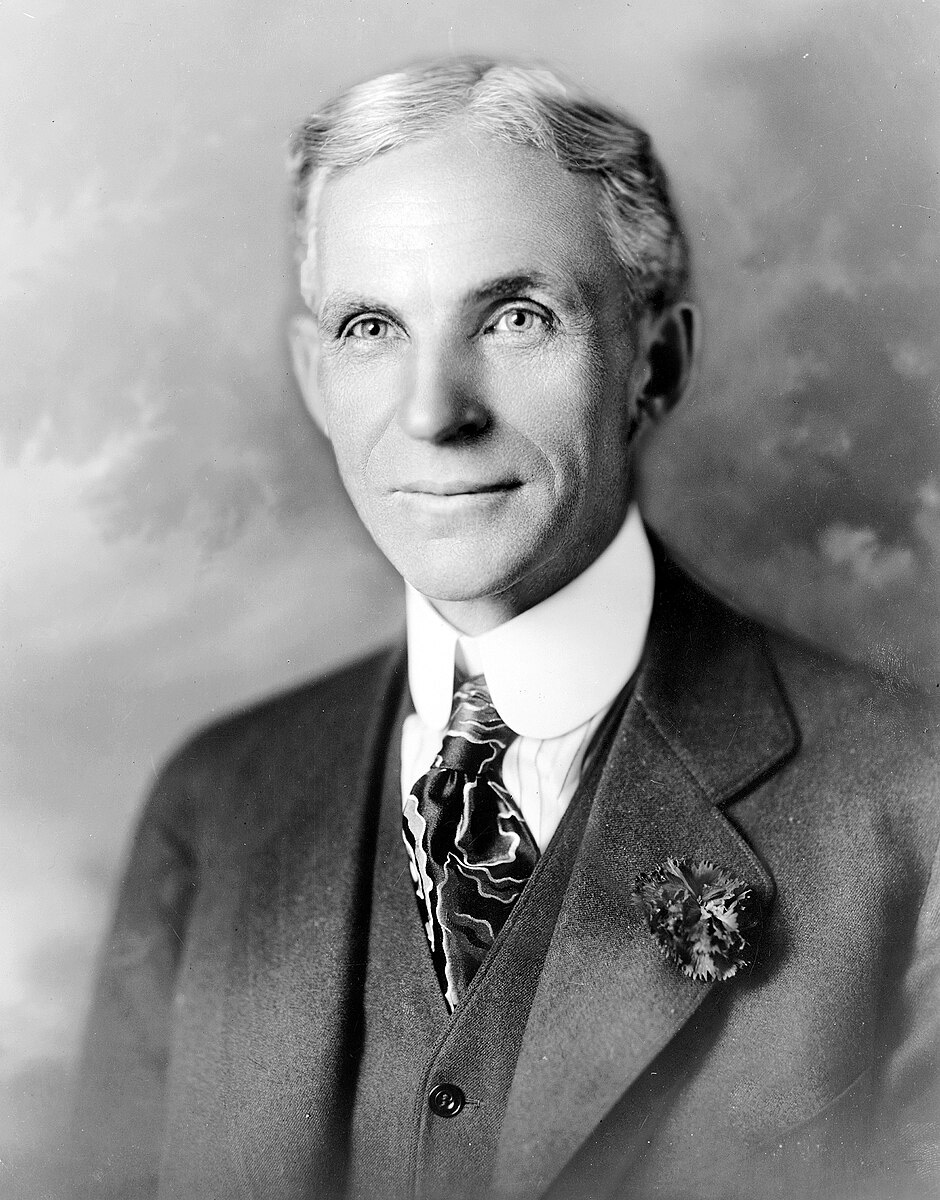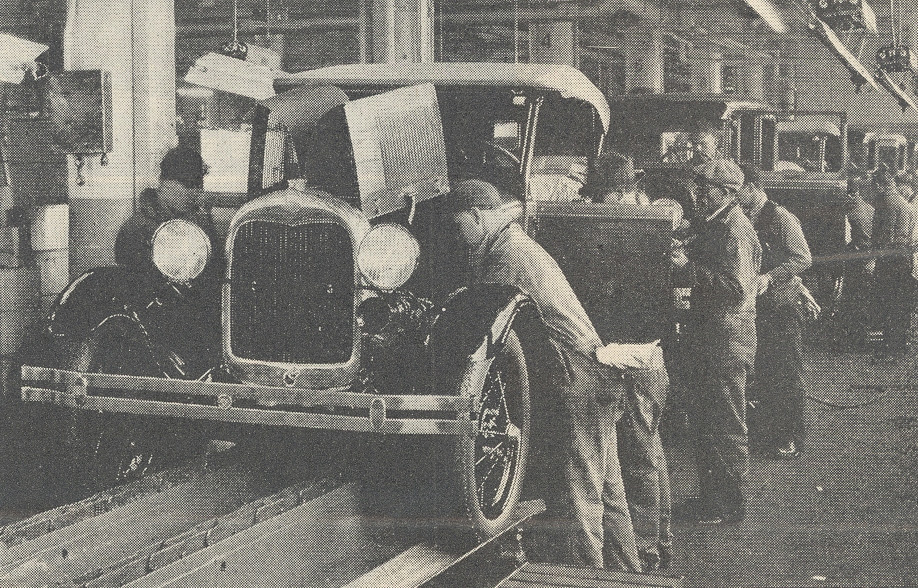 Bio and History of Henry Ford, Founder of Ford Motor Company and Assembly Line Pioneer
Bio and History of Henry Ford, Founder of Ford Motor Company and Assembly Line Pioneer
Full Name: Henry Ford Vitals: July 30, 1863 – April 7, 1947 (Born in Springwells Township, Michigan)
Known for: Founder of the Ford Motor Company, Developer of the Assembly Line Technique of Mass Production
Company: Ford Motor Company
Education: Self-educated, with some schooling up to the age of 15
How Started: Born on a farm in Michigan in 1863, Ford was fascinated by machinery from an early age. He left home at 16 to work as a machinist in Detroit. In 1891, Ford became an engineer with the Edison Illuminating Company, and by 1896, he had constructed his first horseless carriage, the “Quadricycle.” In 1903, Ford established the Ford Motor Company. His introduction of the Model T in 1908 revolutionized transportation and American industry. Ford introduced the moving assembly line in 1913, significantly increasing production efficiency and making cars affordable for the average American.
……
Summary Bio
Henry Ford’s life is a testament to innovation, resilience, and the transformative power of accessible technology. His vision extended beyond the creation of affordable automobiles to fundamentally changing the way products are manufactured. His legacy is evident not just in the automotive industry but in the very fabric of modern manufacturing and labor practices.
Early Years and Education Henry Ford was born on July 30, 1863, in Springwells Township, Michigan, to William and Mary Ford. He was the eldest of six children. Growing up on a farm, Ford disliked farm work and showed an early interest in mechanical workings, dismantling and reassembling timepieces and other machinery. His formal education ended at the age of 15, but Ford continued to learn through hands-on experience and self-initiated study.
Early Career and First Ventures Ford’s career began when he moved to Detroit at 16 to work as an apprentice machinist, though he returned home to work on the family farm after three years, continuing to experiment with machinery. In 1891, Ford became an engineer for the Edison Illuminating Company in Detroit, rising to chief engineer by 1893. This position afforded him the time and money to focus on his personal experiments with internal combustion engines.
Automotive Innovations and the Ford Motor Company In 1896, Ford completed his first self-propelled vehicle, the Quadricycle. After two unsuccessful attempts to establish an automotive company, Ford founded the Ford Motor Company in 1903. The introduction of the Model T in 1908 was a significant milestone, offering an affordable, reliable car. Ford’s introduction of the moving assembly line in 1913 revolutionized industrial manufacturing, drastically cutting production times and costs.
Expanding the Ford Empire Ford’s innovations extended beyond the assembly line to worker compensation, doubling the standard wage to $5 a day in 1914, which not only improved workers’ lives but also reduced turnover and increased productivity. His philosophies about industrial manufacturing, encapsulated in his book “My Life and Work” (1922), emphasized efficiency, affordability, and the welfare of the worker.
Personal Life and Legacy Ford married Clara Bryant in 1888, and they had one child, Edsel Ford. Ford’s later years were marked by controversial stances, including his pacifism during World War I, his newspaper The Dearborn Independent’s antisemitic articles, and his resistance to unionization within his plants, which eventually led to the Ford Motor Company signing a contract with the United Auto Workers in 1941.
Henry Ford passed away on April 7, 1947, leaving a profound impact on industrial manufacturing and the automobile industry. His legacy includes the Ford Foundation, established in 1936 by Edsel Ford, which remains one of the largest and most influential philanthropic organizations in the world.
July 30, 1863: Henry Ford is born in Springwells Township, Michigan.
1891: Ford becomes an engineer with the Edison Illuminating Company.
June 4, 1896: Ford completes his first self-propelled vehicle, the Quadricycle.
1903: The Ford Motor Company is founded.
1903-1904: The original Ford Model A, not to be confused with the more famous Model A introduced in 1927, was Ford’s first ever car model. It was produced from 1903 to 1904.
October 1, 1908: The Model T is introduced, revolutionizing the automobile industry.
1913: Ford introduces the first moving assembly line for automobiles.
1914: Ford introduces the $5 per day wage for factory workers.
1922: Ford’s philosophies on industrial manufacturing are published in “My Life and Work.”
1927: The Model T production ends after 15 million units.
October 20, 1927: The Ford Motor Company officially announced the new Model A, marking a significant evolution in automotive design and technology from the Model T.
December 2, 1927: The new Model A went on sale to the public. It was a highly anticipated event, with innovative features for the time, such as conventional driver controls, including a clutch, brakes, a gas pedal, and a gear shift.
1928: The Model A became available internationally, being manufactured in countries outside the United States, including Canada, Germany, and the United Kingdom. This global reach was a testament to Ford’s growing international presence.
1932: Ford introduces the V8 engine in its models.
1943: Edsel Ford, Henry’s only child, dies at the age of 49.
April 7, 1947: Henry Ford passes away at 83.
MORE:
Detailed History and Biography of Henry Ford »
Main Image Source: Wikimedia Commons | Photo of Henry Ford: Wikimedia Commons | Assembly Line: Wikimedia Commons
Content sources: Original | Generative AI | Wikipedia



